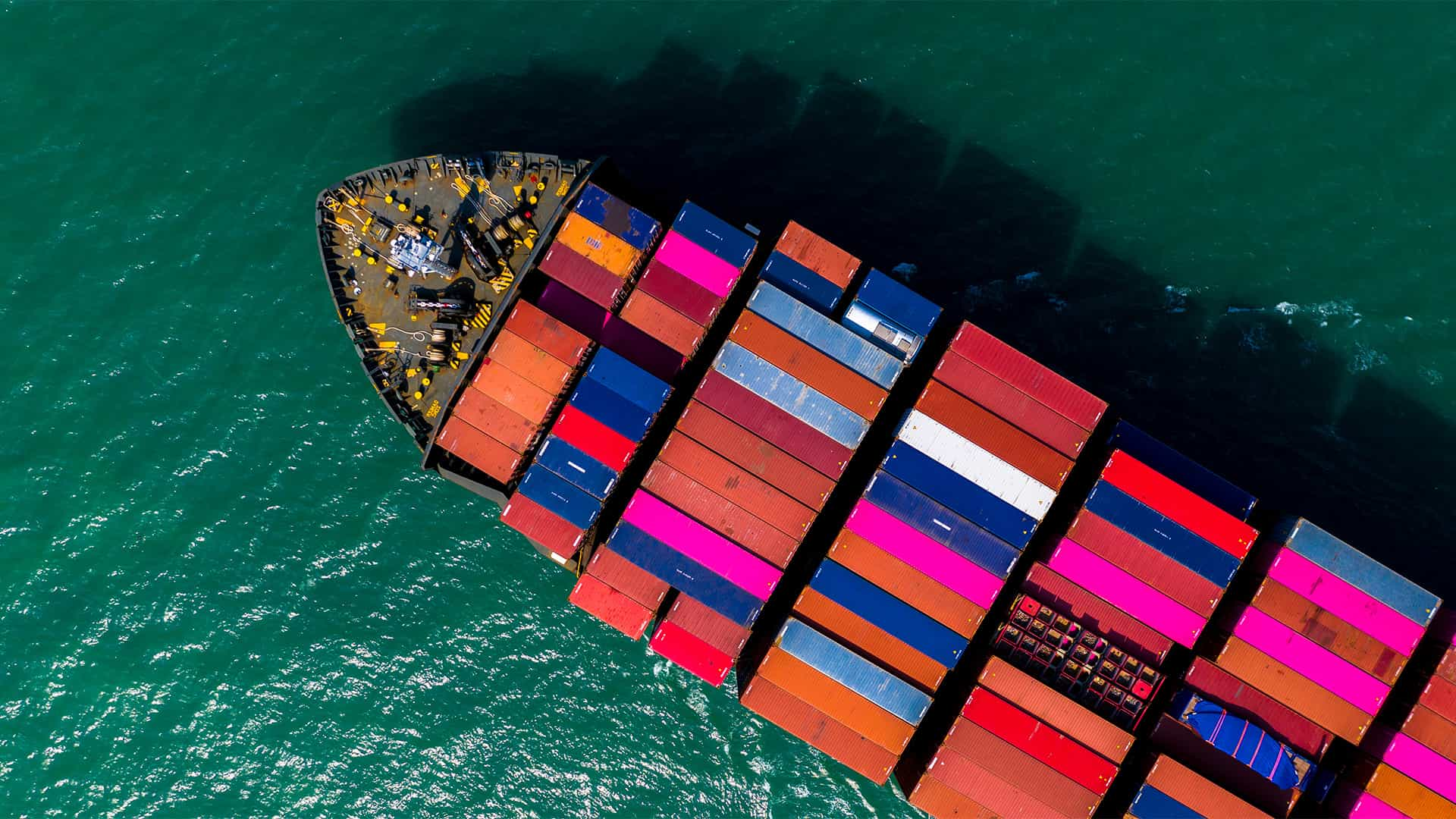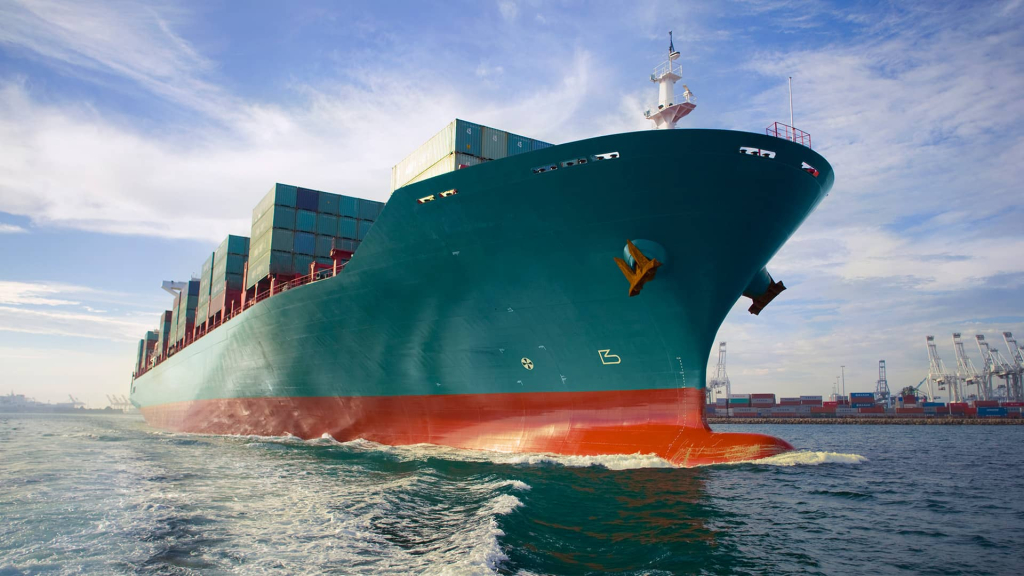
Sea Freight – Weathering the Storm of Uncertainty
The past six months in the containerised sea freight market have been marked by significant uncertainty.
The unpredictable geopolitical landscape, overcapacity concerns caused by the potential reopening of the Red Sea and newbuilding deliveries have caused fluctuating freight rates and shifted market dynamics. Despite promising signs of a less turbulent second half of 2025, the overall sentiment remains cautious, as shippers and carriers continue to monitor the evolving situation and adjust their strategies accordingly.
Market performance
The uptick in container spot rates at the end of 2024 continued into early January 2025. This trend took an abrupt downturn, with key indices reporting the worst first quarter drop in nearly 20 years. Xeneta reported rates from the Far East down: 51% to the US East Coast; 44% to the US West Coast; 50% to North Europe; and 44% to the Mediterranean, and on the Transatlantic down 19%.1 While commentators have compared this decline to the aftermath of the global financial crisis in 2008 and Covid in 2020, the persistent uncertainty caused by the unpredictable geopolitical and macroeconomic conditions currently shaping the market sets 2025 in a league of its own.
Market volatility has been largely influenced by the return of President Trump’s administration in January and the arrival of “Liberation Day” in April. The reciprocal tariffs of up to 145% on imports from China and a universal base tariff of 10% on imports from other countries (except Canada and Mexico) significantly impacted container growth projections. Global container trade grew +11.2% in January, but Drewry and Linerlytica have since cut container growth projections to -1.1% in 2025.2 Freight rates then soared in late May, as the Shanghai Containerized Freight Index jumped by 30%, reportedly its second largest nominal increase to date.3 The most significant increases were on the Transpacific.
Market trends and geopolitical risks
The election of President Trump and anticipated tariffs initiated a trend of frontloading at the start of 2025, particularly from China. As the US-China trade war deepened in April, many shippers subsequently adopted a ‘wait and see’ strategy, resulting in a halt of shipments due to increased import costs and a decline in container bookings from China to the US. Blank sailings increased on the Transpacific route to align with the reduced demand, initiating a capacity shift to other trades such as Far East to Europe.
Recent developments include a 90-day reprieve on certain US reciprocal tariffs, lowering these by 115%, leaving a 30% tariff for Chinese imports. While signs of de-escalation should lead to a revision of container growth projections, the situation remains highly unpredictable and has caused another resurgence of frontloading goods into the US, which could trigger an earlier peak season. Nevertheless, the UK-US trade deal and President Trump’s latest announcement of delayed tariffs for the EU shows further promising signs for a less turbulent second half of 2025.
A significant issue for the container market is the port fee proposal by the Office of the US Trade Representative (“USTR“), first announced in February and revised in April. The fees are primarily targeted at Chinese shipping interests, with fees on the entry of any Chinese-owned, operated, or built vessel into a US port. The fees will be based on a net tonnage basis per US voyage and come into effect on 14 October 2025.4
USTR port fees could significantly reshape global container shipping services. It is anticipated that most shipping lines will redeploy Chinese-built vessels away from US trades, a more likely strategy than substituting for smaller (exempt) vessels or transhipping from a foreign port within 2000 nautical miles of the US. For Chinese operators the fees will be higher and unavoidable. If, as expected, operators substitute Chinese built vessels for those built elsewhere, Chinese operators will find it difficult to impose surcharges when other carriers are able to avoid the fees altogether. Major shipping alliances will have to decide whether to redeploy vessels between trades or look at alternative ways of sharing the burden.
The re-introduction of the SHIPS for America Act (the “Act”) announced in April introduces further complexity to the market. The Act imposes an additional fee against carriers based on the percentage of their orderbook being built in certain Chinese yards. Despite any efforts by shipping alliances to realign their services to avoid USTR port fees, it is likely carriers will still be caught by the Act’s scope. For shippers, the Act requires 1% of goods from China transported on US-built ships starting five years after the date of enactment, which will gradually rise year on year to 10% in year fourteen. Failure to comply will result in the imposition of fines.
Capacity concerns
The Red Sea crisis continues to absorb a significant portion of container ship capacity with vessels re-routed around the Cape of Good Hope. The ceasefire announced in May between the US and Houthi militia in Yemen has raised concern for the potential reopening of the Red Sea which could cause a global collapse of freight rates through the release of surplus capacity into the market.
Despite new incentives by the Suez Canal Authority including a 15% toll rebate for certain container ships, it is unlikely that shipping lines will recommence transits through the Red Sea in the immediate future. Notwithstanding the current high operational costs and need for fleet restructuring, the situation remains unpredictable, and carriers will need long term safety assurances before schedules through the Suez canal are restored.
Despite capacity concerns and low volume growth, the market is experiencing an orderbook boom. The end of 2024 saw a surge of newbuilding contracts with the orderbook now accounting for almost 30% of the global fleet.5 MSC is reportedly the first carrier to reach a fleet of 900 vessels, with another 132 vessels on order.6 OOCL, a subsidiary of Cosco, recently announced an order for 14 new container vessels.7 While the container fleet grew by only 1.2% in the first quarter of 2025,8 the fleet is projected to grow by 6.8% this year. The risks of overcapacity are exacerbated by over 80% of the orderbook being built at Chinese shipyards, reducing operating interest amidst current US trade policy. However, analysts anticipate a drop in orderbook activity throughout 2025 due to overcapacity and geopolitical uncertainties.
To add to an already deteriorating situation, the potential for the delayed scrapping of older South Korean and Japanese tonnage due to USTR port fees could further extend an overcapacity situation with potential efficiency and emissions consequences.
Traditionally, carriers have responded to overcapacity through strategies such as blank sailings. However, an unprecedented level of capacity management will be required to prevent the collapse of freight rates caused by the magnitude of capacity which would be released into the market from a return to the Red Sea combined with reduced volume growth and newbuilding deliveries. Some market commentators have gone so far as to suggest that another black swan event may be the carriers’ only hope.
Contractual considerations
The persistent volatility over the past six months is set to continue for the foreseeable future. The fluctuation of container spot rates can place stress on traditional annual fixed rate contracts. One potential contractual solution for shippers and carriers is the adoption of index-linked contracts. While the uptake of index-linked contracts has historically been slow, it will be interesting to see whether continuing uncertainty in 2025 catalyses their popularity, particularly as they rebalance bargaining power and can represent a fair reflection of the market.
The escalating costs posed by shifting trade policies will prompt carriers to offset any losses through surcharges. Shippers are likely to resist the imposition of any surcharges, particularly if they have fixed rate contracts. Shippers and carriers will have to review their current agreements to determine which, if any, additional surcharges may be imposed and on what basis. For the negotiation of sea freight agreements, a compromise may be the introduction of new surcharges only resulting from emergency situations or causes outside carriers’ reasonable control. This maintains the fixed rate status of the contract, while providing shippers with the peace of mind that no further surcharges may be imposed other than those already agreed.
Shippers will favour a clearly defined process for the introduction of any new surcharges. Typically, this could involve (i) prompt notification of the rationale for any proposed surcharge; (ii) negotiations to be carried out in good faith; and (iii) once agreed, a lead time for the new surcharge to come into effect to allow shippers to make internal business adjustments (i.e. on pricing).
While parties may seek to negotiate new or existing agreements in light of market volatility, it is unlikely that shippers or carriers will favour any long-term agreements, unless index-linked, and instead opt for shorter-term agreements with the option to extend. While recent events may cause tension in shipper and carrier relationships, market volatility will render any prolonged negotiations futile. Flexibility, compromise and caution will be needed from all market participants to successfully weather this storm of uncertainty.
Skye Reynolds, Trainee Solicitor, assisted in the preparation of this briefing.
Footnote
- The Risk of Holding Spot Rates in a Shifting Market
- Ocean Freight Market Update May 2025
- US tariff turmoil spurs near record 30% jump in container freight rates | TradeWinds
- How USTR Measures Affect The Global Shipping Market – HFW
- Shipping Market Review – May 2025
- Ocean Freight Market Update May 2025
- Logistics firm Orient Overseas orders 14 container vessels worth $3.08 billion | Reuters
- Shipping Market Review – May 2025










